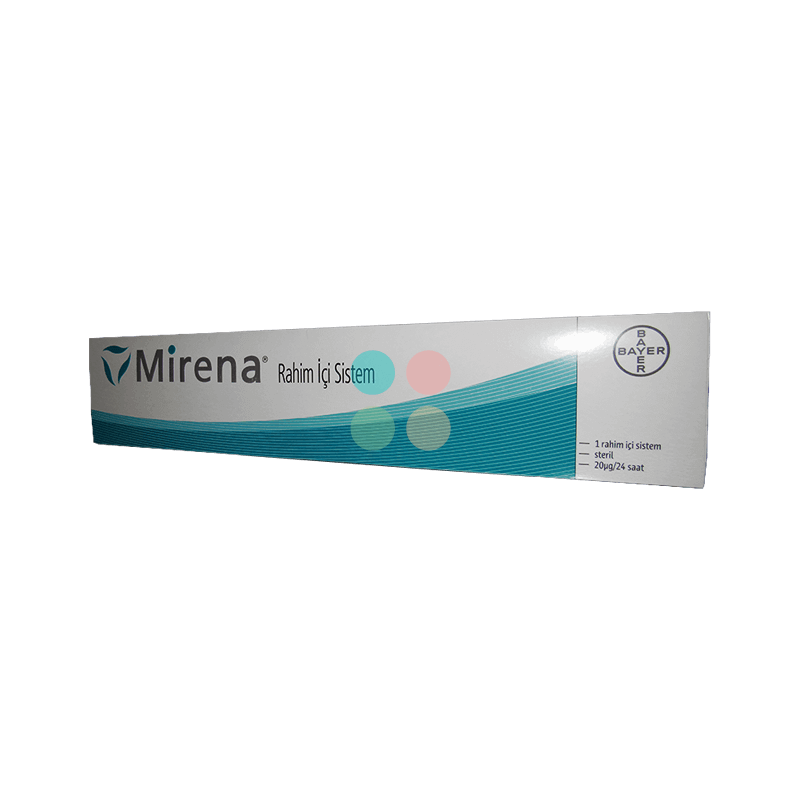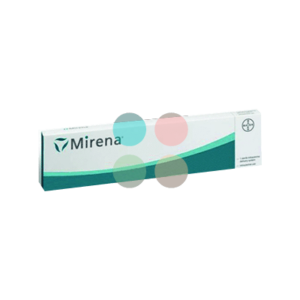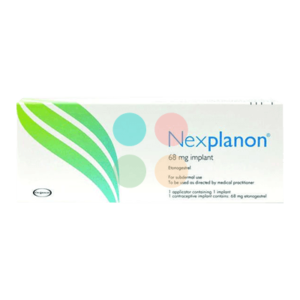Mirena Non-English 52mg 1 IUD
Mirena Non-English 52mg 1 IUD is an intrauterine device that discharges micro amounts of the synthetic progestin Levonorgestrel (LNG). It operates locally within the uterus, having dual actions, both as a foreign body and as a reservoir for the release of LNG. In addition to providing a segment leading contraceptive efficacy, it has valuable applications in certain gynecologic disorders. Miniscule systemic absorption of LNG crowns Mirena with negligible side effects, unlike other progestin pills and injectables.
Mirena Non-English 52mg 1 IUD a T – shaped device to be inserted into the uterine cavity.
The T – shaped frame is made of plastic or polyethylene. It has a pair of nylon type threads attached to the end of the stem forming a tail of sorts. These threads facilitate self-identification of the device as being located correctly in place and help in device removal when needed.
The silicone-Levonorgestrel based elastomer core on the stem of the Mirena IUD contains a total amount of 52 mg of Levonorgestrel.
Local action nevertheless, Levonorgestrel is absorbed systemically into the blood stream which results in a circulating level of 150 to 200 picograms/ml.
However, it is the local actions of LNG on the uterine environment that decide its effectiveness as a contraceptive. Mirena birth control device lasts and provides efficiency as a contraceptive for up to 5 years from the date of insertion. Most women experience light periods, but in some cases periods totally disappear.
Prior to Mirena IUD insertion, every woman must be adequately counseled in the language she understands about the advantages, drawbacks, reversibility, precautions and safety with use of the device. A Pap smear and evaluation for pelvic infection is advisable. It is to be inserted by a doctor or a specified medical caregiver who is adequately trained in IUD insertion and has had experience in handling Mirena.
For contraceptive purposes the ideal time for insertion is during menses or within 7 days of the onset of menses. Such timing affords a softer cervix, easy access to the uterine cavity and masking of insertion bleeds by menses.
Mirena is ideal for lactating women as the circulating progestin does not interfere in the quality or quantity of breast milk produced and the levels of LNG are too low to pose any reasonable problems to the ingesting infant. Moreover, progesterone only pills are a recommended mode of contraception in lactation. However, pregnancy must be ruled out and a withdrawal bleed must be ensured prior to insertion during lactation.
Mirena Non-English 52mg 1 IUD has a shelf life and this is not be confused with its contraceptive life. The shelf life extends up to the expiry date printed on the pre sterilized pack. Only devices within the shelf life may be inserted as there is no guarantee on the hygiene, sterility, freshness of the active ingredients and safety of the product once the expiry date is reached or crossed. The contraceptive life of Mirena birth control device is 5 years and it begins from the date of insertion regardless of shelf life.
Mirena insertion is accomplished usually in any OPD based clinic with a gynecology examination table. Where insertions are anticipated to be difficult as in younger women with a predisposition to vaginismus, women with no previous vaginal deliveries or procedures (only caesareans) or apprehensive women, it is advisable to be done in a minor OT.
Pain killers and anti spasmodic medications, either injectable or oral are used up to an hour before the procedure in uncooperative or anxious women. For the OT insertions local anesthesia and or light sedation may be advocated.
Antiseptic pre insertion care with cleansing vulvovaginal douches and sterile drapes is usually adopted. The insertion procedure itself should not take more than a few minutes and is generally pain free, but some women may experience pelvic discomfort that subsides after the procedure.
The woman must be taught to feel the threads with her fingers with ease, by deep clean digital self-examination, in positions as advised by the care giver.
Mirena birth control device has manifold actions in preventing pregnancy. These mainly consist of a foreign body reaction, local LNG mediated womb lining (endometrial) changes and intensification of the cervical (Mouth of the womb) secretions.
The presence of an intrauterine device such as Mirena in the uterus acts like foreign body inciting a host responses ranging from inflammatory chemicals and white cells that tend to reject any sperms entering or any early pregnancy from implanting into the womb.
Mirena Non-English 52mg 1 IUD releases micro amount of LNG into the womb that makes its lining unreceptive to hold any embryo.
Lastly, the Levonorgestrel makes the cervical mucus dense and inspissated, hindering sperm penetration into the uterine cavity. Over a period of time the progressive daily action of Levonorgestrel in the uterus produces a state of cessation of menses or amenorrhea, which is beneficial in treating disorders like endometriosis and adenomyosis.
Contraception is the foremost function of Mirena IUD, one that it renders very well. It is the leader among IUD (Intra Uterine Device) methods of contraception and among all reversible methods as such. The claimed efficacy is very high with pregnancy prevention rates above 99%. This means that for a given year, only one out of a thousand women using Mirena IUD may conceive. It is an ideal contraceptive for nursing mothers.
Benign tumors of the womb namely fibroids are common in many women. They are located at various sites in the uterus and in some instances are attended by problems of excessive blood loss. Mirena IUD controls and reduces this blood loss with the state of amenorrhea it produces and may reduce the vascularity of these fibroids rendering them easier to treat or operate upon. Women approaching menopause benefit a lot from Mirena birth control device by obtaining a good contraceptive for unexpected coital acts and as a hormone replacement therapy once menopause is reached.
The advantages of Mirena Non-English 52mg 1 IUD:
- It offers long term protection of five years with a single insertion.
- It is not taxing on the user like the combined pill, which mandates daily motivation and compliance.
- It is free from life threatening adverse effects such as blood clots and certain cancers that hormonal pills predispose to.
- It is ideal for women who suffer from heavy and painful periods. Up to 20 % of women will experience no periods after one year of use.
- Useful for women who want long term effective contraception free from side effects.
- Beneficial in women who cannot use estrogens.
- It can be used through menopause.
- It is free from interactions with other medications.
- Ectopic pregnancies or pregnancies in the fallopian tubes are less likely with Mirena. Ectopic pregnancy may disturb future fertility with the loss of a tube.



Reviews
There are no reviews yet.